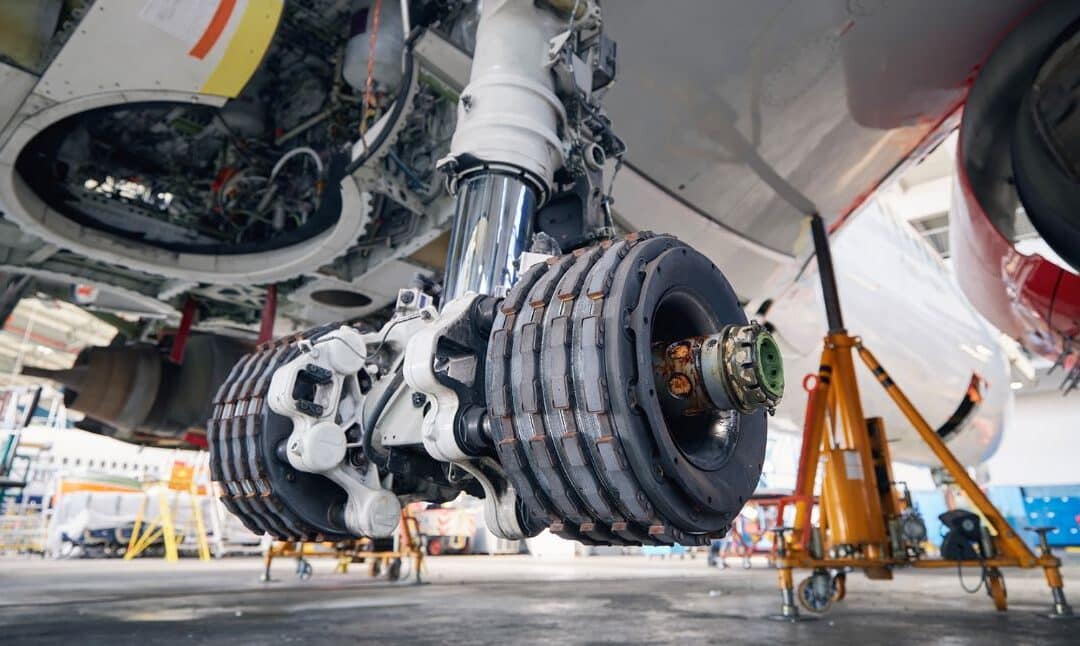
by NMG Aerospace | May 1, 2023 | Uncategorized
Aerospace engineering is an increasingly popular career path. With so many advancements in aerospace technology, from unmanned aircraft to space travel, there are many new and exciting opportunities for professionals to pursue. Employment in the aerospace industry is growing steadily at a rate of 6% every year. In addition, the aerospace engineering field offers competitive salaries and the chance to play a role in bringing innovative, cutting-edge technology to life.
Aerospace Engineering Career Path
Aerospace engineering can be a fairly competitive field. However, if you are an aspiring aerospace engineer, you can take early steps toward a successful career path. Strategies include focusing on math and science coursework, seeking internship and co-op experiences, and considering a master’s degree in the future.
Math & Science Centered Schooling
Education is the first step toward a successful career in aerospace engineering. Aspiring aerospace engineers can take the first steps by focusing on chemistry, physics, and mathematics coursework as early as high school. Math is especially important in any type of engineering, and working hard in high school can pave the way for you to take even more advanced math classes once you reach college.
Once you enter higher education, you should pursue degrees in engineering or a related field. Additional coursework in chemistry, physics, and math at the collegiate level is also highly beneficial since those skills will support their core curriculum and likely come in handy in the future. You might also consider taking a few courses in computer science and software engineering, since the skills taught in these courses may also benefit their career aspirations.
Internships & Co-op Experiences
Co-ops have been part of the engineering experience for over one hundred years. Co-ops are an excellent opportunity to learn on-the-job skills, such as communication, client management, relationship building, problem-solving, and other skills that can’t be learned in a classroom. Spending time in an active work environment gives you a chance to learn how people use the products, how to market different products, and how to apply engineering fundamentals to real-world problems. And while not all co-op experiences lead to job offers, it’s not uncommon for co-op students to become employees at the same company after graduation.
Consider a Master’s Degree
Not every aerospace engineering job requires a master’s degree. Many engineers go their entire careers with just a bachelor’s degree and enjoy great success. However, there are some roles that do require an advanced degree, specifically a Master of Science in Aerospace Engineering (MSAE). If you have aspirations of leadership and advanced technical roles, a master’s degree can be extremely beneficial.
Some colleges and universities offer five- or six-year programs that combine a bachelor’s and master’s degree into one streamlined program. This allows young professionals to enter the workforce having already earned an advanced degree, which can open up more job opportunities for them as they begin their careers. That being said, plenty of aerospace engineers choose to go back to school later in life to earn their master’s degree.
Job Growth for Aerospace Engineers
As previously stated, the job market for aerospace engineers is expected to grow by 6% every year, with new opportunities appearing all the time. And there is no single path forward for someone interested in a career in aerospace engineering. An aerospace engineering professional can explore countless possibilities, including:
- Designing aircraft and spacecraft.
- Designing the parts, components, and systems within an aircraft as a mechanical engineer.
- Building blueprints and technical schematics as a drafter.
- Leading teams of engineers and support staff.
- Working directly with customers in a sales or business development role.
- Teaching aerospace engineering to college, university, and grad school students as a professor.
There are so many different jobs for aerospace engineers, all of which allow you to pair your passion for aerospace engineering with other talents and interests.
It’s also worth noting that there are multiple fields within the aerospace engineering industry that person may be interested in. In addition to commercial aircraft, there are robust sectors for military aircraft, private aircraft, and space exploration, along with academia.
Growth and Experience With NMG
NMG Aerospace has worked incredibly hard to cultivate a work environment where everyone can thrive. We have invested considerable energy and resources into creating a workplace culture where each and every one of our employees feels supported and motivated to do their best.
We provide all of the standard employee benefits, such as paid holidays and time off, a 401k plan, full medical, dental, vision, and prescription benefits, and short- and long-term disability. But we’ve added additional benefits over the years to meet the changing needs of the American worker, including:
- Flexible schedule options.
- Reimbursements for safe, workplace-appropriate shoes and prescription safety eyewear.
- Leadership development programs and other workplace learning opportunities.
- Tuition assistance.
- Multiple healthcare expense support options, include a flexible spending account (FSA), health savings account (HSA), and an annual wellness reimbursement allowance.
- Employee events, activities, and free tickets.
We also understand that starting a new job, even your dream job, can be stressful and overwhelming. All of our new hires go through a carefully curated onboarding experience that’s designed to make the transition as smooth as possible. The process includes comprehensive safety and quality orientations, continuous improvement training, and opportunities to connect with and befriend their new colleagues right away. New hires are also assigned a workplace mentor or “buddy,” someone they can turn to with questions as they learn the ropes.
NMG Aerospace believes strongly that excellent work begins with excellent employees who feel empowered to bring their best every single day. We’re always looking for new team members who share our passion for aerospace engineering and want to join the NMG family. To learn more about what we offer our valued employees, check out our benefits >
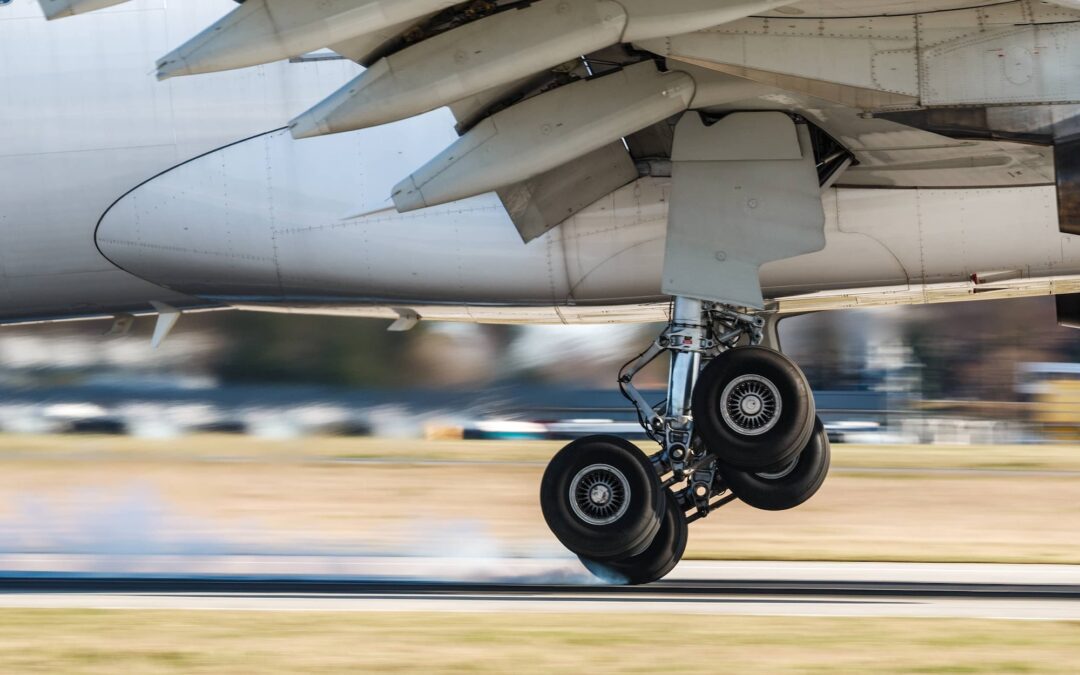
by NMG Aerospace | Apr 24, 2023 | Uncategorized
How Landing Gear Works
Landing gear is the only part of the aircraft that makes contact with the ground and supports the weight of the craft when the plane is not in flight. Whether the plane is at rest, taxiing, turning, or accelerating for takeoff, the landing gear is responsible for transmitting those forces between the aircraft and the ground.
Well-designed landing gear is critical to safe takeoff and landing. Landing gear must be designed for exact balance, so the plane can tilt slightly for takeoff without the tail striking against the surface of the runway.
The tires and wheels must withstand the same pressures as a standard automotive tire: bumps, loads, cornering, and other forces.
Landing Gear Design Process
Some aircraft manufacturers make the mistake of waiting until late in the process to begin designing the landing gear. Because the design and integration of the landing gear affects the entire aircraft, waiting too long to think about landing gear is a mistake—and can necessitate a large-scale redesign. The structure of the landing gear must be able to bear the load of the plane, and the plane itself must be built to include space for the landing gear to be stored while in flight.
Client Goals
It’s important to start with a conversation about the overall design of the plane, as well as considerations such as performance and safety requirements, timeframe, technology, resources, and budget. These factors may affect material and design choices.
Choosing Configuration
Aircraft manufacturers may have multiple landing gear configurations to choose from. Some options are lighter than others, some offer better on-the-ground visibility to the pilot, and others are better suited to different types of landing surfaces, such as groomed runways versus field environments. The right choice depends on the purpose of the plane and where it will be used. In any case, it is vital to choose a configuration that offers stability and equilibrium.
Meeting Specifications
Each type of aircraft may be required to meet different specifications and regulatory requirements. It is crucial to understand which specifications must be considered when designing landing gear.
Analysis, Testing, & Qualification
Today’s testing technology allows manufacturers and designers to use models and real-world tests to recreate stress, fatigue, and other forces in a controlled environment. This allows for careful analysis of each component of the landing gear to ensure that it can withstand its environment and perform as expected. Designers should be mindful to include time for analysis, testing, and qualification in the design timeline.
Design Factors to Consider
There are several important variables to consider when designing landing gear for aircraft of any size and variety. Landing gear is subjected to a variety of forces while in service, and understanding these forces is key to designing an effective landing gear assembly.
Load Weight During Landing
Of course, aircraft landing gear must support the weight of the plane while taxiing and while at rest. However, the landing gear must also be able to withstand much greater loads and pressures while the aircraft is actually landing. Bumps and other hazards on the landing surface also add additional load to the landing gear.
Side Loads
It is vital to design a landing gear structure strong enough to withstand side loads. A side load is any pressure placed on the aircraft’s wheels and landing gear from the side due to cornering, turning, or crosswinds. This largely depends on where the plane will be used. Side loads put a lot of pressure on the joint where the landing gear attaches to the aircraft and may even cause bending.
Landing Distance
Landing distance is an important factor to consider when designing landing gear. For example, an aircraft that will land on aircraft carriers needs landing gear that can withstand a firm, swift, short-field landing, rather than the slow, gentle descent of a commercial aircraft landing on a long, paved runway.
Aircraft Manufacturing from NMG
NMG Aerospace has spent decades refining our landing gear manufacturing methods for efficiency and precision. Every single member of our team is an expert on lean manufacturing, which translates to faster delivery of top-quality parts made exactly to spec that work seamlessly once assembled. We design exceptionally streamlined manufacturing processes that make each component we produce as economical as possible, saving time, cost, and other resources.
NMG has years of experience manufacturing high quality landing gear components based on exacting specifications. To learn more about our manufacturing methods and how we can serve you, talk to a member of our team >

by NMG Aerospace | Apr 20, 2023 | Uncategorized
Takeoff and landing put significant thermal and mechanical stress on the plane’s landing gear, which means aircraft wheels and brakes must perform their essential functions under highly rigorous conditions. This is especially true of sport aircraft, which operate under competitive conditions and often don’t take off from or land on groomed, paved runways.
Every component of the landing gear, including the wheel, must be tested and inspected to ensure that the assembly can perform as expected, every time. Aircraft wheels are prone to failure if they develop cracks, dents, or other defects, so it’s vital to examine the wheel carefully for any sign of damage or inconsistency.
Testing Aircraft Wheels
Many aircraft wheels must comply with regulatory requirements or undergo testing in a formal setting. Wheels are also subjected to periodic inspections before a flight to ensure structural integrity.
Passing a Wheel Stress Test
There are two categories of stress testing for aircraft wheels: nondestructive testing and eddy current inspection.
Nondestructive testing entails examining the wheel for issues without destroying it. The plane wheel is not subjected to any crush, rust, or impact tests. Instead, the wheel is inspected for any signs of damage, such as cracks, nicks, grooves, impact, corrosion, and other wear and tear. The wheel bearing will also be inspected for loose bolts, markets, heat damage, or other issues.
Eddy current inspection uses a forced air current to test the seat of the wheel bead. The goal is to detect any issues, flaws, or weaknesses that may impact the plane wheel’s performance and which the human eye may not be able to detect. The bead experiences high stress during takeoff and landing, so it’s crucial to ensure that the area is not damaged or cracked before takeoff.
STOL Competition & Matco Wheels
Many sport aircraft pilots build their own planes to compete in short takeoff and landing (STOL) competitions. The goal in a STOL competition is to cover as little distance as possible during takeoff and landing, often under 15 feet. Needless to say, these rigorous acceleration and braking events put significant stress on the aircraft’s wheels, which necessitates an aircraft wheel that can withstand the heat, pressure, and fatigue.
Matco Aircraft Landing Systems is proud to manufacture reliable, durable wheels and brakes that perform exceptionally well in STOL competitions and similar conditions. We understand the unique requirements of STOL aircraft and manufacture our products using feedback about those needs. Many STOL competitors choose Matco produced wheels to help them achieve their goals and do their best flying at these events.
Newly Expanded Aerospace Manufacturing Capabilities
NMG Aerospace is proud to announce that we have acquired Matco Aircraft Landing Systems. By joining forces with the experts at Matco, we can expand our aerospace manufacturing capabilities and make all our products better by cross-referencing best practices from different sectors of the aerospace industry.
Our expanded aerospace manufacturing capabilities include producing wheel and brake assemblies and components, including nose and tail wheel assemblies, tires, tubes, and countless other kits and assemblies. We also offer assembly services and custom assembly for specialized projects.
Aircraft Wheels and Brakes Produced by NMG
NMG manufactures brakes and wheels specifically for the homebuilt aircraft market. As a family-owned business, we deliver wheels, brakes, assemblies, and components much faster than one of the larger manufacturers, so you’re never waiting around for the parts you need. Our customers are achieving incredible things at STOL competitions and beyond with NMG produced wheels and brakes.
See our full product line >
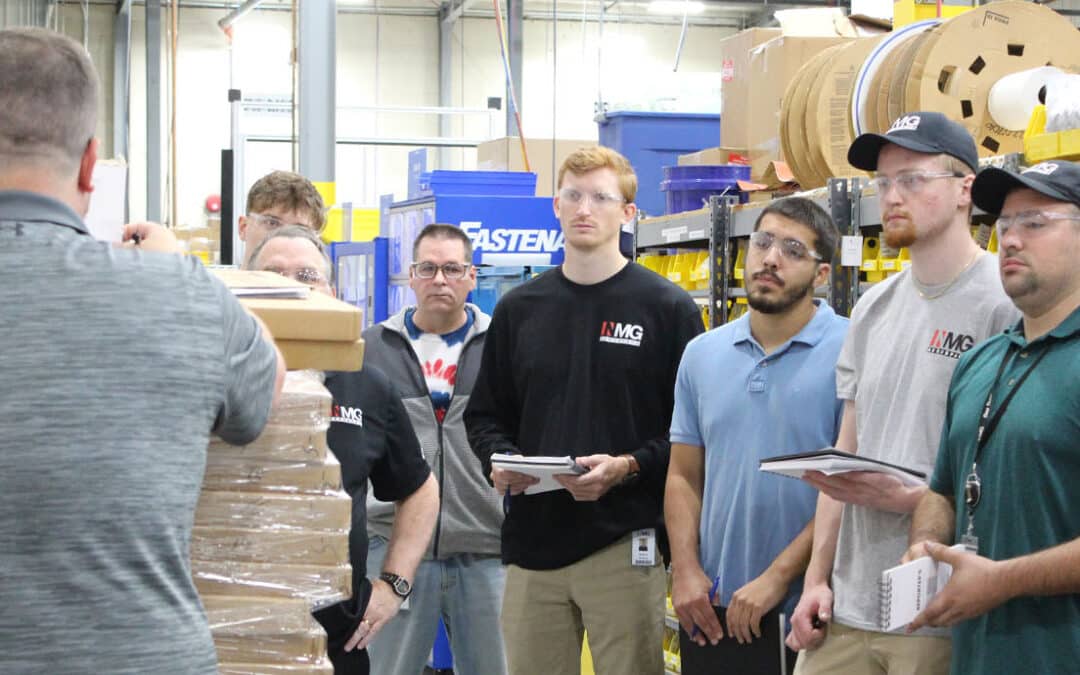
by NMG Aerospace | Apr 9, 2023 | Uncategorized
Benefits of Domestic Parts
Aerospace is one of many industries that has the luxury to choose between overseas and domestic manufacturing. And while taking an offshore approach to production and procurement may save a few dollars, there are several significant advantages to choosing domestic aerospace components whenever possible, ranging from cost savings to industry presence.
Lower Shipping Costs—and Fewer Supply Chain Risks
The aerospace industry is expected to show steady growth over the next few years, with big-name manufacturers increasing their production volume annually. Between commercial, recreational, and military aircraft, the industry consumes a high volume of components every year, varying from extremely small to extremely large.
Shipping all those components from overseas, especially when accounting for oversized parts, can be incredibly expensive. And the price tag can increase exponentially when multiple carriers and shipping partners are involved, forcing companies to raise their prices, sacrifice profit margins, or cut costs elsewhere.
Opting for American-made aerospace parts can dramatically reduce the cost of shipping. Plus, domestic shipping routes are less fragile and vulnerable to costly disruptions, which reduces the risk of delays and additional expense.
Convenience
Perhaps one of the most obvious benefits of choosing a domestic manufacturer for aerospace parts is the convenience. There’s no need to plan for a time difference greater than a few hours, and you might even be fortunate enough to be in the same time zone. This makes for easier communication and faster replies to emails and phone calls.
Plus, there are times when you may wish to schedule an on-site visit to build a relationship with a manufacturer or learn more about their capabilities. This is much easier to do without the additional hassle of international travel, including long flights and additional documentation.
Robust Industry, Economy, and Workforce
According to reports from PwC, the United States is repeatedly ranked among the best countries in the world of aerospace manufacturing. With an educated workforce, a healthy economy, and strong industry presence throughout the country, the United States is an extremely attractive option for aerospace parts manufacturing. And with the U.S. leading the charge on several up-and-coming aerospace specialties, such as green aviation and the space sector, the country is rich with both intellectual and production assets that companies need to remain competitive in a rapidly changing industry.
Meeting Domestic Standards
Quality isn’t just about the final product. From the earliest stages of design and material selection to final standardized assessments before launch, quality is critical at every step of the aerospace production timeline.
Many overseas manufacturers of aerospace parts rely on outside contractors to handle their quality testing work. This can add a layer of complexity and logistical challenges to the process. At NMG Aerospace, we do all of our quality testing in-house, streamlining the production process for our customers and minimizing the stress of managing so many partners. On-site quality testing also allows for faster detection of potential issues—and more efficient solutions.
Domestic Aerospace and Aircraft Parts From NMG
NMG Aerospace is proud to be a third-generation, family-owned, American company, producing top-quality engineered and manufactured aerospace parts and components since 1967. We have decades of experience making custom aerospace parts to spec at our state-of-the-art manufacturing facilities in Ohio and Arizona, with reliable and repeatable results. We’ve mastered the art of lean manufacturing so we can deliver top-quality products as efficiently as possible, minimizing unnecessary costs and optimizing the timeline of every project.
Choosing an American manufacturer for aerospace parts and components can result in faster lead times, more convenient communication, and tighter quality controls at every stage. To learn more about NMG’s domestic manufacturing capabilities for aerospace parts, talk to a member of our team >
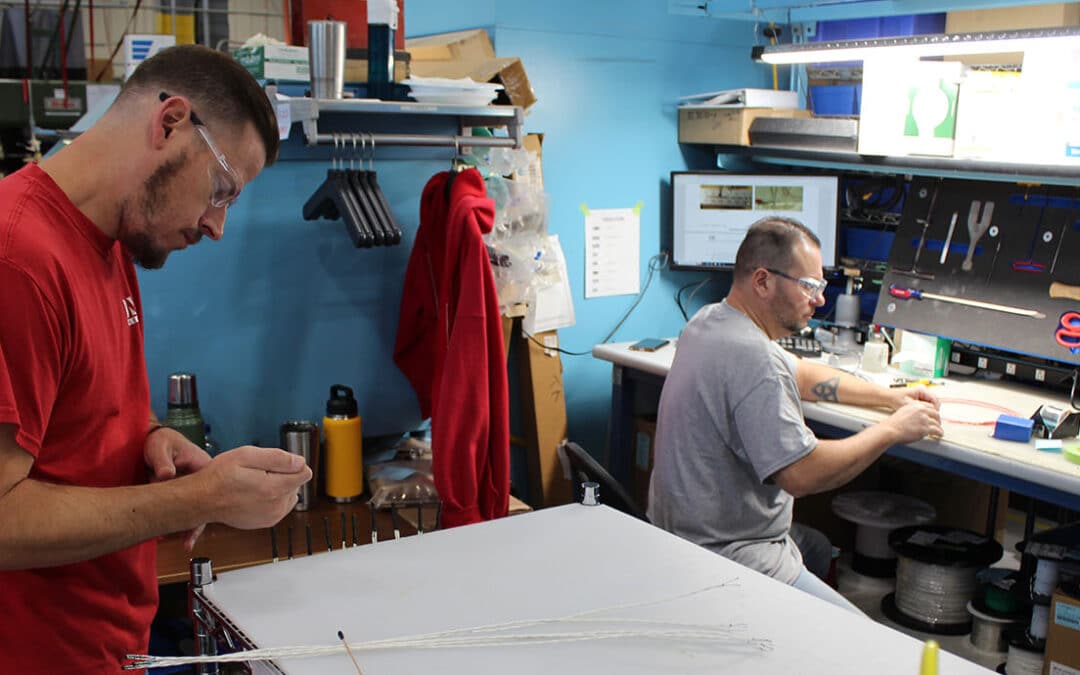
by NMG Aerospace | Apr 7, 2023 | Uncategorized
What is MRO?
MRO stands for maintenance, repair, and operations. Depending on the context, the “O” is MRO may also stand for overhaul.
In general, MRO is a useful umbrella term for just about any activity related to smooth operation of both the business and any important equipment and machinery. In the aviation and aerospace industry, this usually includes routine maintenance and timely repairs of aircraft components and systems. But it may also refer to inventory and project management tools, daily activities such as cleaning and inspecting repair tools, scheduling, and many others, depending on the business and industry. Simply put, a streamlined MRO strategy can make a meaningful difference in the efficiency and operation of any business. Investing in good MRO practices can even help a business save money by prolonging the service life of company property and avoiding costly repairs.
How MRO Affects the Aviation Industry
MRO plays a critical role in the aviation industry, in the military, commercial, and business sectors alike. A strong MRO strategy can help companies cut down on costs, downtime, and safety incidents, all of which can translate to stronger revenue and fewer disruptions to both short- and long-term operations and goals.
Minimize Costs.
Investing in good MRO practices can actually save money in the long run. By spending strategically on regular maintenance and repair, you can easily avoid the types of malfunctions associated with poor upkeep. Additionally, you can detect possible issues early and find a solution when the problem is small and manageable, rather than paying for massive repairs or total replacements when something catastrophic happens.
Minimize Downtime and Major Disruptions.
In virtually every sector, from commercial airlines to military aviation, aircraft are most valuable when they’re in the air. If any single aircraft is grounded for longer than planned, the loss of capacity, revenue, and other value can be both challenging and frustrating to deal with.
Scheduling regular downtime on a manageable scale for MRO can actually maximize the utility and value of an aircraft. Regular maintenance and inspection keeps the plane running smoothly, and a technician is more likely to notice possible problems in the early stages. A small repair at that stage requires far less downtime than a large-scale repair, which could keep a plane grounded for days—or even weeks.
Minimize Safety Incidents.
In the aviation and aerospace industry, MRO isn’t just about the aircraft. It’s also about the tools, systems, and equipment used to perform maintenance and repairs. Caring for these tools is equally important to ensuring streamlined operations. Plus, improperly functioning tools can be dangerous to operate. Keeping a close eye on repair tools can dramatically minimize malfunctions or issues that could put someone’s safety at risk.
MRO Process
The MRO process is fairly customizable depending on the needs, goals, and size of a given business or, in the aviation industry, fleet. But there are a few key steps that are almost taken to streamline the process and minimize downtime.
Determine Repairs and Maintenance Needed
Every MRO procedure starts with a thorough inspection. This gives the repair professional a chance to spot any changes to the part or component and determine whether it simply needs routine maintenance or a more extensive repair is required.
Perform Repairs
A maintenance and repair professional will usually have all the resources they need to handle any necessary repairs in addition to routine maintenance. This allows for timely execution of the maintenance and repair plan.
Ensure Strength of Repairs
Depending on the nature of the repair, the repair technician may take additional steps to test the strength and durability of their work.
Quality MRO Repairs with NMG
NMG Aerospace has over 20 years of experience providing MRO services to the aerospace and aviation industry, including military, commercial, and business aircraft. We have facilities in two regions of the United States:
- Stow, Ohio: Accessory (Class 1) and Limited Accessory.
- Tempe, Arizona: Limited Accessory and Limited Airframe.
NMG can also provide MRO services for pneumatic tools of all kinds.
We strive to deliver “first time right” repairs at competitive prices with quick turnaround times, with the goal of helping you minimize downtime and unnecessary expense. Our team’s MRO knowledge is extensive, but we have specialized expertise in deicing, electromechanical, hydraulic, and pneumatic systems, as well as pack boards and other accessories.
To learn more about NMG’s MRO capabilities and to discuss a possible partnership, talk to a member of our team >
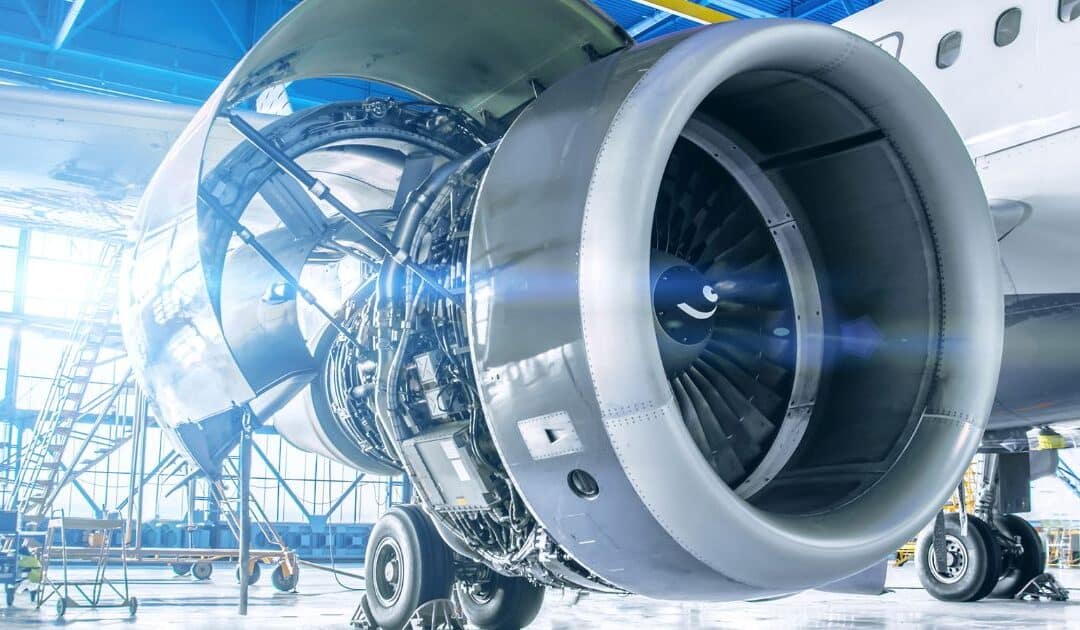
by NMG Aerospace | Mar 11, 2023 | Uncategorized
The world of aerospace technology has changed dramatically over the years. From a twelve-second flight in 1903 to the high-performance spacecraft of today, the industry continues to achieve spectacular innovation. Aircraft technology and the aerospace manufacturing industry have evolved side by side to become vital cornerstones of transportation, exploration, and more.
History of Aerospace Engineering
First Successful Flight – 1903
The history of aviation can be traced back to 1903, when brothers Wilbur and Orville Wright developed an aircraft that was capable of powered, sustained flight, rather than simply gliding. The plane’s first successful flight was only twelve seconds long, and they wrecked it later that same day, but the Wrights had made a vital step in the right direction. They made rapid improvements to their wing-warping technology, which allowed the pilot to turn the aircraft in flight, and caught the world’s attention.
The first patent for wing-warping technology was granted in Europe in 1904, with American patents issued in 1906. In 1908, the US Army purchased the Model A Flyer from the Wrights. The purchase agreement stipulated an extra payout if the aircraft could fly faster than forty miles per hour.
Early Uses for Aircraft – 1910s and 1920s
In the 1910s, most aircraft were built from wood and covered with coated fabrics. At this point in aircraft history, the undisputed world leader in aerospace technology was France. French aircraft were far more advanced than what other countries were working on.
Despite France’s technological edge, aircraft racing was popular all over Europe. As early as 1911, races were being held all across the continent.
In the early 1920s, there were nearly 150 airports around the United States. Pilot-owned aircraft and firms started providing airmail services around the country, hopping from airport to airport.
First TransAtlantic Flight – 1927
In 1927, American pilot Charles Lindbergh earned his place in aerospace history by flying across the Atlantic Ocean for the very first time. He flew from New York to Paris on a single-engine monoplane called The Spirit of the St. Louis, a 3,610-mile journey that took almost 34 hours. He was 25 years old at the time.
Before 1927, public awareness of and interest in aviation was modest at best. Aerospace technology was primarily associated with war and the military at the time and hadn’t managed to catch the attention of civilians. But Lindbergh’s feat captured the public’s imagination. No one could stop talking about aviation.
This spike in public interest led to an explosion of new ideas and innovations. People started exploring ways to make airframes lighter and more efficient. Most notably, external brace wings fell into disuse, making way for the cantilevered wing, which is still in use today.
Aerospace Manufacturing Is Transformed – 1930s
The 1930s brought about several key changes for the manufacturing side of the aerospace business. In the early days, most aircraft manufacturers were making all their own parts internally. But the industry was growing fast: People were exploring new applications for aircraft, and demand for parts was spiking. New companies sprung up, offering their machining, casting, forging, and extrusion services, which allowed aircraft manufacturers to outsource parts production. These were the very first aircraft industry tier suppliers.
Another large change came about in 1934, when antitrust legislation triggered the separation of air transport services and aircraft manufacturing. One company in particular split into three distinct entities, including Boeing Airplane Company and United Airlines, both of which are still operating today.
Other notable achievements of the 1930s include the first successful helicopter flight and the jet engine. While many companies and countries were working on jet technology, it would be several more years until jet planes were adopted for commercial use.
The Dawn of the Space Age – 1950s
In 1957, the Soviet Union launched Sputnik, the world’s first artificial satellite. Just twelve years later, astronauts walked on the surface of the moon for the very first time. The Soviet Union and the United States spent the next several decades developing new space-worthy technologies at breakneck pace.
NMG’s Aerospace Manufacturing History
NMG was founded in 1967, at a time when American aircraft manufacturers were working to build relationships with overseas partners. Our goal at the time was to provide machining services to the growing aerospace industry in northeast Ohio. The region has hosted a NASA facility since the 1940s and is home to a surprising number of aerospace manufacturers, and we knew we had something meaningful to contribute to the growing industry.
Since then, NMG has dramatically expanded its offerings to include engineering and design services, qualification testing, and maintenance, repair, and operations (MR), along with precision machining and manufacturing. We have years of experience crafting complex aircraft components and are dedicated to expanding our capabilities based on what our customers need.
NMG has produced over 10,000 unique components for upwards of fifty aerospace platforms. From hobby planes to elite defense aircraft, our fingerprints can be found in virtually every type of aircraft currently in use, and we’re proud to see our clients take to the skies with the help of our work.
Aerospace Manufacturing Today
The aerospace industry is developing at a rapid pace. Biofuels, unmanned aircraft, artificial intelligence (AI), additive manufacturing, hypersonic flight, and the possibilities of aerial mobility are all changing the landscape, with long-lasting effects on the way we think about flight.
Many aircraft manufacturers rely on their tier suppliers to share the responsibility of exploring and investing in new and advanced technologies to help them keep pace with these developments. In-house engineering teams are partnering with external engineering resources to bring new ideas to life and refine existing designs, so that every iteration of every part is a step toward the next generation of flight.
Aerospace Engineering Capabilities from NMG
The expert team at NMG Aerospace has over fifty years of engineering and design experience. Whether you’re creating a new component from scratch or looking to refine an existing system, we can provide the resources and expertise you need to optimize your design. We’ve been in lockstep with the aerospace and defense industries for decades, so we can provide a unique perspective on the evolution—and future—of these crucial sectors. To learn more about our design services, manufacturing capabilities, and other areas of expertise, talk to a member of our team >
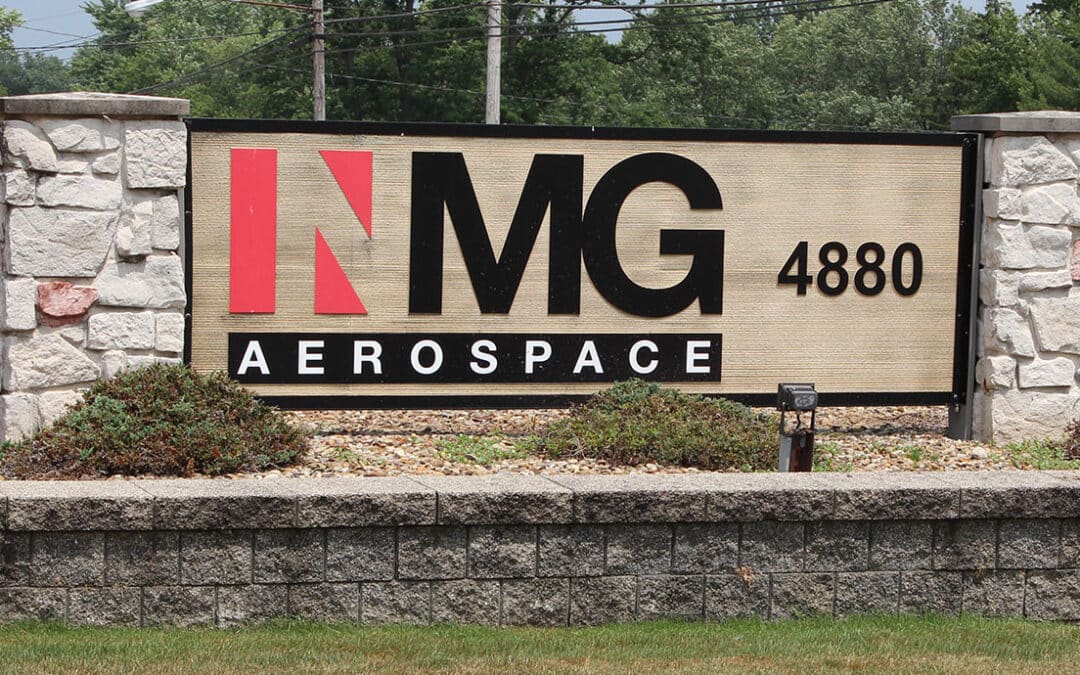
by NMG Aerospace | Jan 3, 2023 | Uncategorized
NMG Brings 55+ Years of Expertise Manufacturing Aircraft Wheels and Brakes to the Experimental, Light Sport, and Advanced Air Mobility Sectors
(Stow, OH – Jan 3, 2023) — NMG Aerospace is pleased to announce the acquisition of Matco Manufacturing, a Salt Lake City, Utah-based manufacturer of aircraft wheels, brakes, and related components. Matco Manufacturing specializes in experimental and light sport aircraft wheel and brake product design and component manufacturing.
“The acquisition of Matco reinforces NMG’s commitment to supporting all areas of the aerospace marketplace, particularly in the areas of wheels, brakes, and actuation,“ said NMG’s Vice President of Business Development and Engineering Jeremy Earley. “It is exciting to take a core part of our offering at NMG and serve a new, growing market in experimental, light sport, and advanced air mobility sectors.”
NMG Aerospace is combining Matco’s capabilities into its trademark design, manufacturing, and testing expertise to make incremental advancements in its own product portfolio.
Matco Manufacturing was owned and operated by George Happ, a landing systems engineer with decades of experience, including tenures at Cleveland Pneumatic (now Collins Landing Systems) and Honeywell.
“George’s experience and passion for designing and manufacturing safe, high performance landing systems is what sparked NMG’s interest in Matco,” Earley said.
“NMG’s enthusiasm and knowledge for what we have built at Matco made it the perfect partnership to compliment our team,” Happ said. “Their understanding of the products we produce will bring a level of comfort and expertise to both existing and new customers.”
Happ will remain a key contributor to MATCO’s continued success by staying on as part of the leadership team both during and after the transition. The acquisition was finalized in Q4 of 2022. Matco’s existing customers can expect no disruption in product availability or performance.
About NMG Aerospace
NMG Aerospace is a 100 percent privately held, family-owned company offering world-class aerospace manufacturing and design services. Employing more than 350 individuals across locations in Ohio and Arizona, NMG has core competencies including aerospace parts manufacturing, CNC machining, design, assembly, inspection, and testing services. Learn more at https://www.nmgaerospace.com.
###
Media Contact:
Jeremy Earley
VP of Business Development & Engineering
Phone: 330-907-8366
Email: Jeremy







